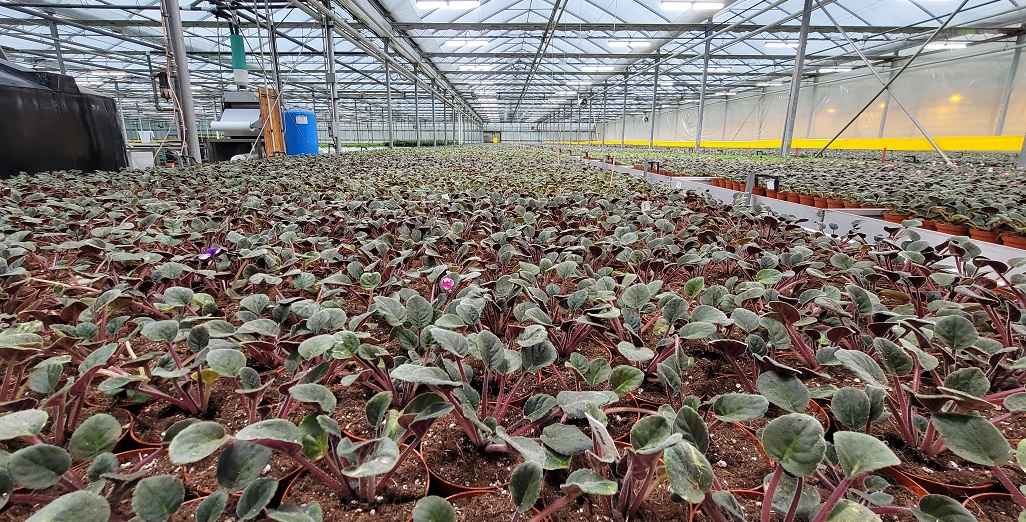Sign up here to subscribe to the Grower2grower Ezine. Every two weeks you will receive new articles, specific to the protected cropping industry, informing you of industry news and events straight to your inbox.
Nov 2021
Roots in three year-old substrate

Outstanding
Over the past year, due to delays in shipping, some growers have been growing in their substrates for much longer than they normally would- some for two years or in some cases longer. I recently visited a cucumber grower who is growing his 10th cucumber crop in the same substrate. At an average of 4 months per crop this means the substrate will be up to 40 months old when replaced! It is quite remarkable and a testament to the substrate it has lasted over 3 years. The current and last crop in the substrate looks as good as the first with extremely good fruit quality and excellent production levels achieved.
Growing continuously in old substates requires skill. With every crop the water content increases and the potential to control diseases gets harder. Whatever substate you are growing in; with each new crop it will fill up with roots. These old roots don’t disappear when the new crop is planted. With each new crop the substrate will have less air space than the previous crops. The majority of the roots will form towards the bottom of the slab. Over time the compounding effect, from old roots at the bottom third of the bags or slabs, make this area difficult to drain effectively. The water contents can be very high in this area and over time reach 100%.
Ten (cucumber) crops on the same substrate means you will have to take this into consideration. You may even find that the drainage holes are blocked with the build-up of old roots making it hard for water to drain Electrical Conductivity (EC). If you do end up with compounding EC build up you will require more volume to flush this out. If there is already a higher water content then adding to this could increase disease issues. You may want to consider cutting new drainage holes in your slabs/bags at different points to help reduce water content at the base of the slabs, this in turn helps to ‘push’ high EC out. Each time the slab is used it in essence holds more water so the technical ability of the grower is crucial to manage the irrigation and change direction as the substrate properties change.
Growing 10 crops on the same slab is not what I would ever recommend, but if you are forced into this scenario then you will require some very strict hygiene protocols. I would definitely apply a biological option between crops, especially the top of the substrate, to reduce any spores that could cause gummy stem blight or pythium from effecting new plants.
Tomato Growers:
For tomato growers that are infected with PepMV – reusing the substrate is a big concern. You will run the real risk of carrying the virus over to the new crop. It is, in my view, too risky. The best option for businesses that can not change substrates is to contemplate growing a completely different cultivar for at least one crop rotation to hopefully eliminate PepMV. Not ideal and your market may be an issue. However, until we collectively know more about the longer-term effects of PepMV I don’t really have any other advice to offer.
Capsicums:
For capsicum growers, that are using substates for a second season, I’m interested to know how the last 3-5 months of the crops go. I am relatively confident the first two thirds of the crop will see no ill effects. It is a good test case to see if substrates can be successfully re-used for capsicum plantings. I know some growers have grown for several seasons on pumice substrates but I have rarely come across Coir or Rockwool being used for multiple seasons.
Eggplants:
The root systems of grafted eggplants can be very aggressive, even though these are tomato rootstocks the roots, if not careful, will completely fill up a slab/bag of substrate in a short period of time. The option to use for a second year needs to be carefully considered.
Article written and compiled by Stefan Vogrincic
All Article’s checked and edited by Marie Vogrincic
I appreciate your comments. Please feel free to comment on the grower2grower Facebook page:
https://www.facebook.com/StefanGrower2grower/
CLASSIFIED
Subscribe to our E-Zine
More
From This Category

Less fertilisation and higher yields with Ambiorix iron polyphosphate

Bluelab Introduces OnePen™

Free Webinar on Controlling Waterborne Pathogens in Greenhouses

Whitepaper elaborates on safe recirculation of irrigation water

Introducing Moleaer’s Trinity: Revolutionizing Agriculture with Advanced Nanobubble Technology

























